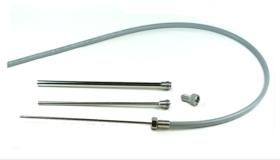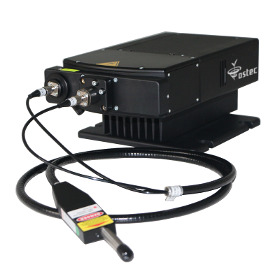- europages
- >
- COMPANIES - SUPPLIERS - SERVICE PROVIDERS
- >
- probes
Results for
Probes - Import export

OSTEC ARTTOOL LIMITED COMPANY
Russia
FiPOS product line from Ostec & art photonics GmbH is a cluster of innovative fiber optic probes and fiber probe couplers designed for inline analytical analysis in a wide spectral range from UV to MidIR (550 cmˉ¹ to 55 550 cmˉ¹). FiPOS family of immersion fiber probes includes ATR, transmission, transflection, fluorescent, and diffuse reflection probes all compatible with any FTMIR, FTNIR or dispersion spectrometer, process photometer, IRLED, or QCL spectral sensor to use inline for PAT applications. FiPOS Fiber Probe Couplers (FPC) couple any FTIR spectrometer with various fiber optic probes and upgrade it to eliminate sampling and to run reaction monitoring inline. Our fiber probe couplers provide high coupling efficiency for ATR – absorption, transmission, or reflection process spectroscopy in a wide spectral range from UV to MidIR to use fiber-coupled FTIR not only with LNcooled MCT detectors but with TEcooled MCT and uncooled IR detectors as well.
Request for a quote
OSTEC ARTTOOL LIMITED COMPANY
Russia
RAMOS RU120 basic compact Raman spectrometer is a standalone research instrument designed to perform spectral measurements with capabilities at the level of high-end systems. Spectrometer RAMOS RU120 has a rigid, moving parts free design that does not require adjustments, has both high sensitivity and high spectral resolution, and is equipped with a built-in single-mode laser. RAMOS RU120 can be equipped with Raman fiber optic probes. A wide range of capabilities, high reliability, and compact size allow using RAMOS RU120 for various scientific and industrial applications. The objects for complex research can be semiconductors, minerals, polymers, pharmaceutical and biological substances, coatings, and other materials. RAMOS RU120 spectrometer can be equipped with a built-in 532 nm or 785 nm laser. Other lasers are available on request. The most affordable price in the Research Class segment of instruments!
Request for a quote
NT-MDT LLC
Russia
HD Scanning Thermal Microscopy (HD SThM) allows studying local thermal properties simultaneously with QNM measurements. From the hardware point of view it was implemented using AppNano VertiSense™ thermocouple probes. The thermal conductivity and temperature mapping modes (CMM, TMM) can be realized by positioning the AFM laser at the end or the central part of the probe, respectively. HD mode working principle allows exceptional spatial resolution of SThM measurements in comparison to conventional Amplitude Modulation (AM) mode. That was demonstrated in TMM of a microheater sample. SThM and HybriD mode is the winning combination for distinguishing between the constituents of polymer blends as demonstrated in the example of a blend of polystyrene (PS) with low density polyethylene (LDPE) (see below). The difference in thermal conductivity of the polymers (PS – 0.12 W/mK; LDPE – 0.33 W/mK) allows the assignment of the colder matrix to LDPE and the hotter islands to PS.
Request for a quote
NT-MDT LLC
Russia
In HD Piezoresponse Force Microscopy mode (HD PFM) an AC voltage is applied to the conductive AFM cantilever when the tip comes in contact with the sample during each fast force spectroscopy cycle. Applied AC voltage causes mechanical oscillations of the piezoelectric (ferroelectric) sample.Corresponding vertical and lateral motions of the AFM tip are recorded and processed to get the amplitude and phase characterizing the local piezoelectric coefficient and local polarization direction respectively. Since the AFM tip retracts from the surface in each scanning point, the lateral tipsample interaction force is significantly reduced in comparison to the conventional contact PFM technique. This provides new capabilities for piezoresponse studies of soft, loose and fragile objects like biological samples, nanoparticles etc. Furthermore an AFM cantilever of higher stiffness and resonance frequency can be used.
Request for a quote
NT-MDT LLC
Russia
NTEGRA is a multifunctional device for performing the most typical tasks in the field of Scanning Probe Microscopy. The device is capable of performing more than 40 measuring methods, what allows analyzing physical and chemical properties of the surface with high precision and resolution. It is possible to carry out experiments in air, as well as in liquids and in controlled environment. The new generation electronics provides operations in highfrequency (up to 5MHz) modes. This feature appears to be principal for the work with highfrequency AFM modes and using highfrequency cantilevers.* There are several scanning types implemented in NTEGRA scanning by the sample, scanning by the probe and dualscanning. On account of that, the system is ideal for investigating small samples with ultrahigh resolution (atomicmolecular level) as well as for big samples and scanning range up to 100x100x10 µm.
Request for a quoteDo you sell or make similar products?
Sign up to europages and have your products listed
Results for
Probes - Import exportNumber of results
5 ProductsCountries
Company type